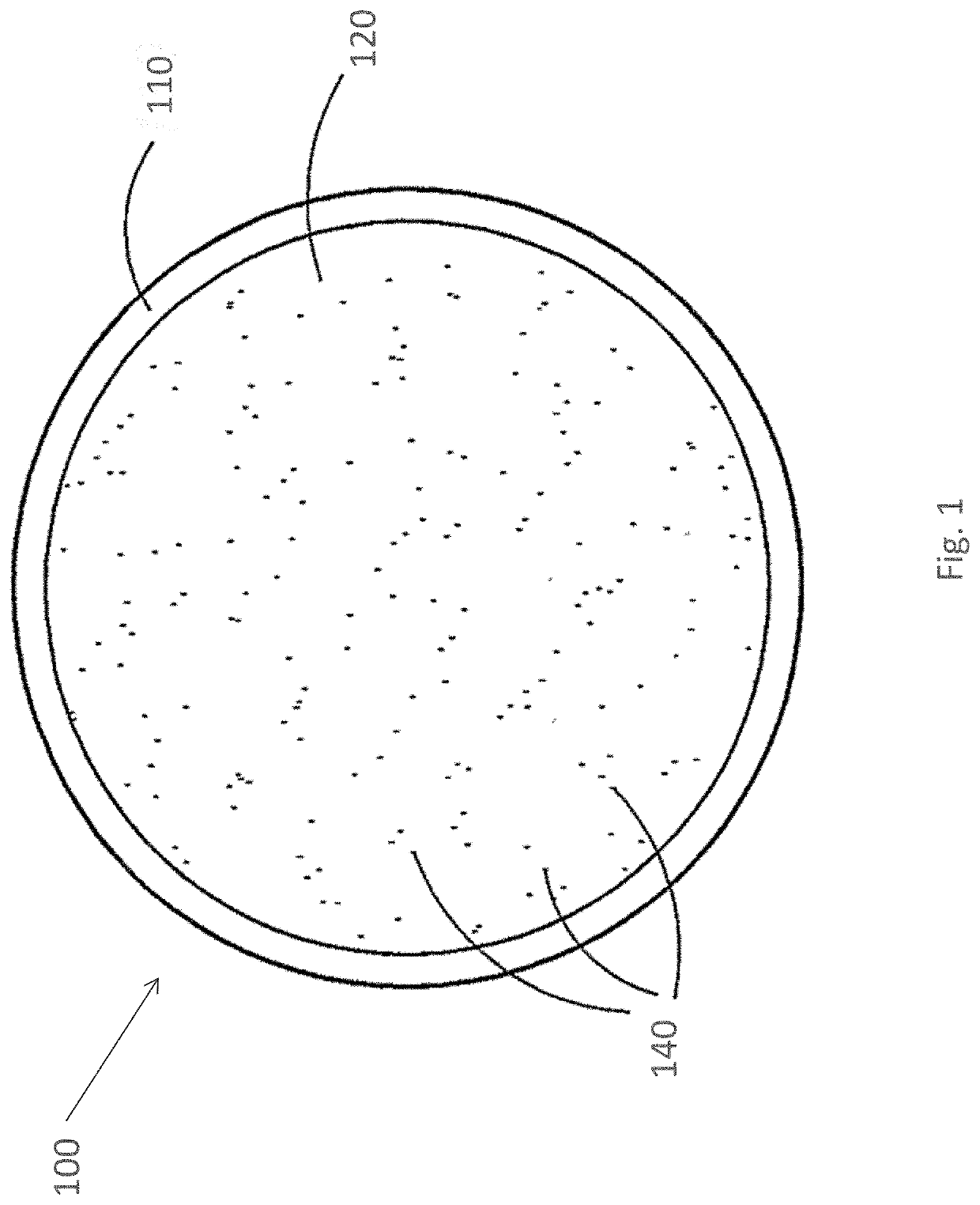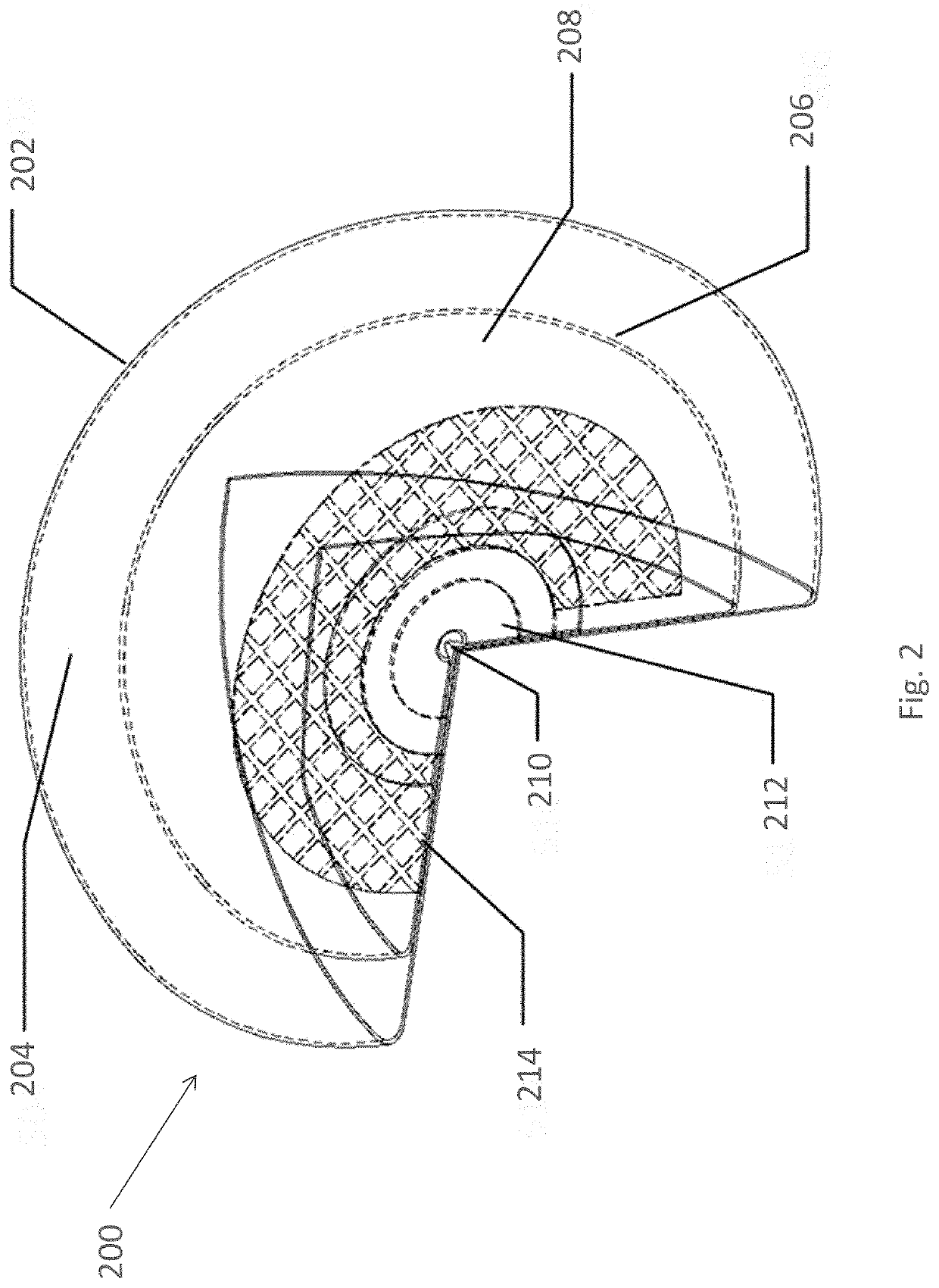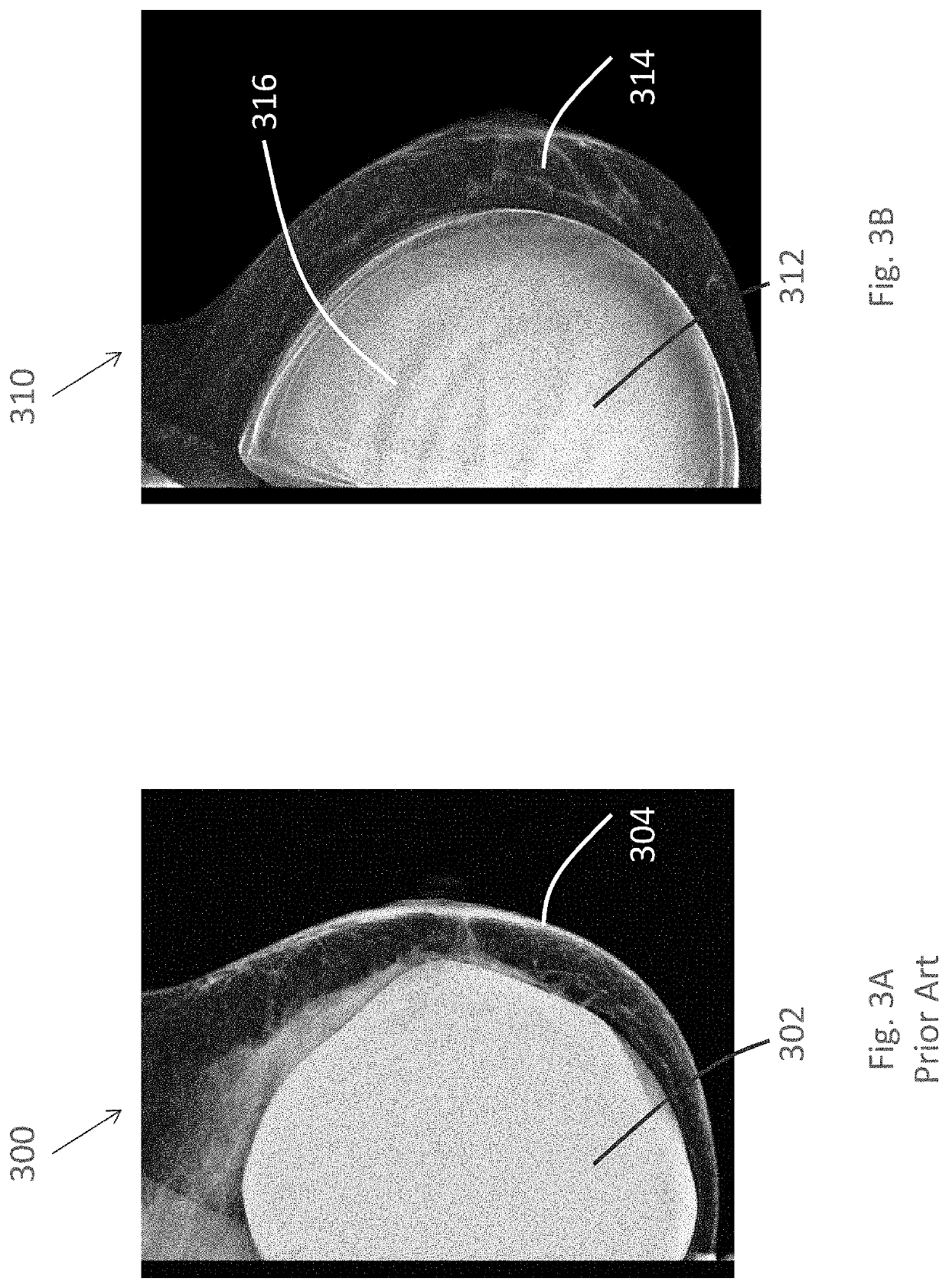Composite implant material
a composite implant and implant technology, applied in the field of implantable prosthetic devices, can solve the problems of affecting the diagnosis of potentially life-threatening diseases, requiring significant sensitivity and skill of mammographers, and affecting the examination of augmented breasts, so as to improve radiology characteristics, reduce associated visual noise, and improve radiolucency
- Summary
- Abstract
- Description
- Claims
- Application Information
AI Technical Summary
Benefits of technology
Problems solved by technology
Method used
Image
Examples
Embodiment Construction
[0098]The present invention provides a composite implant material comprising a base material mixed with additives. The implant material has improved radiology characteristics such as improved radiolucency and decreased associated visual noise from ultrasonography. The definition of the implant shell, when imaged using ultrasound, is preferably improved through use of a composite material immediately adjacent to the shell that is hyperechoic. As echoes are created by the differences in conduction speed of sound waves, hyperechoic implant material is created through the maximum reduction in the speed of sound. The implant therefore preferably comprises low density additives such as hollow additives or additives that include gas. Preferably, the additives have a partial or complete vacuum, making the echo even stronger, as there are less sound conducting molecules.
[0099]The material of the present invention is more radiolucent than pure silicone gel, when viewed for example in a mammog...
PUM
| Property | Measurement | Unit |
|---|---|---|
| surface roughness | aaaaa | aaaaa |
| surface roughness | aaaaa | aaaaa |
| size | aaaaa | aaaaa |
Abstract
Description
Claims
Application Information
 Login to View More
Login to View More - R&D Engineer
- R&D Manager
- IP Professional
- Industry Leading Data Capabilities
- Powerful AI technology
- Patent DNA Extraction
Browse by: Latest US Patents, China's latest patents, Technical Efficacy Thesaurus, Application Domain, Technology Topic, Popular Technical Reports.
© 2024 PatSnap. All rights reserved.Legal|Privacy policy|Modern Slavery Act Transparency Statement|Sitemap|About US| Contact US: help@patsnap.com










